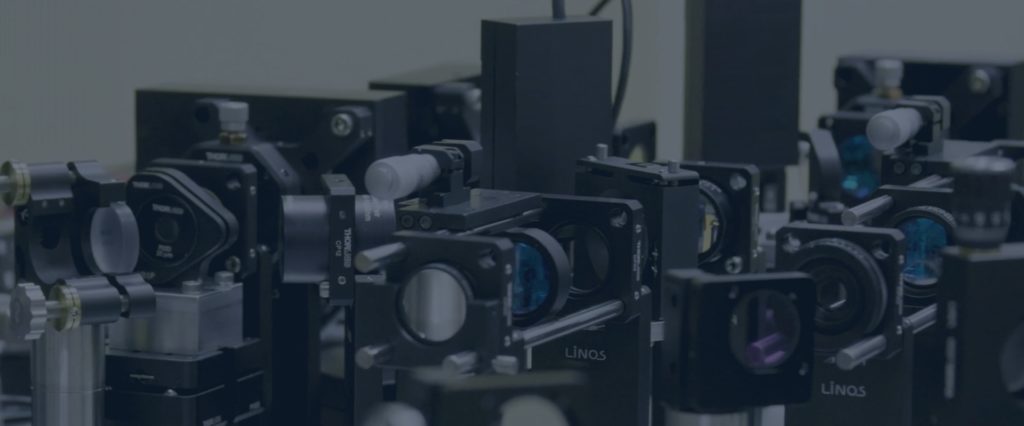In our second installment of this series designed to boil down the questions that need to be answered before selecting the right mirror, we will review some of the past categories with alterations specific to laser beam shaping and introduce a few new ones that pertain only to beam shaping. We plan to focus on pulse shaping applications in our third and final installment of this series.
So you have a beam (CW or pulsed) and you want to control it. Below are the fundamental questions that need to be asked in order to ensure that you’re on the path to obtaining great results in your research or manufacturing application. This list should be combined with Part 1 of this series to get the total picture of what’s needed. I have left out the “pitch” and “response” categories, assuming that you have read the previous installment. Click here, in case you haven’t.
1) Aperture: How big is your beam?
The size of the wavefront is the first and foremost issue to understand. Some applications have no control over this while others can change the size of their wavefront through the use of some simple focusing optics. Before doing research into your alternatives, you should figure out what your limitations are in relation to this.
2) Control: Phase control? Beam steering?
This will greatly affect the basic type of mirror you will need. For phase control, most modern phase-only mirrors will work, depending on your requirement of resolution (see “2. Resolution” from Part 1 of this series). However, if you get into beam steering, the amount you need to move your beam will greatly affect the type of mirror you need. For example, if you’re trying to move the beam multiple degrees, a fast-steering mirror is probably a good place to start. However, if you’re looking to only make very fine adjustments (milliradians), you can benefit from MEMS-based solutions which are usually referred to as tip-tilt-piston (TTP) devices or piston-tip-tilt, if you’re from one other particular company out there (you know who you are J). Many customers have come to us asking about using our entire mirror surface to steer a beam. For those asking for big angles, we unfortunately have to turn them away, but some want to steer it a very slight angle at high levels of precision and we can do that.
3) Speed: Do you want to make fine adjustments? Are you looking to phase-wrap?
If you’re shaping a beam that is pretty much static, then some low-cost solutions will work. However, if you’re looking to change the profile at high speeds with high precision, MEMS solutions are a great bet. The stroke is sufficient to accomplish phase-wrapping, using our SLM model (segmented surface). With sub-nanometer precision, very precisely-shaped beams are possible.
4) Power
This is a biggie: If you have a high-powered laser, your options become limited very quickly as most of the very precise devices are a bit fragile as well. Lots of research is being conducted to steer big, powerful lasers and the bulk of the technologies out there fall short due the fact that they are made of thin-film surfaces and temperature-sensitive materials. My recommendation for this is to make sure you know the “big three” properties and contact individual manufacturers to see what their experience is.
They are:
1) Peak power (in W/cm2)
2) Average power
3) Pulse width (if applicable)
Most manufacturers probably can’t guarantee much, but if your application has beam characteristics close to some of the data points they have, then it will make you much more comfortable that you won’t be frying mirrors when you fire things up. BMC has a database that is constantly being updated with new experience that we would be happy to discuss. Also, see this paper for the latest published results from our friends at the UCO/Lick Observatory.
As I mentioned before, this is not exhaustive, but if you have these questions answered, your first conversation with either us or one of our competitors will be a pleasant one which will make you more confident of your purchase.
Please chime in and let me know what you think of this series! Again, stay tuned for the final installment where I will talk about pulse-shaping and the different ways that deformable mirror technologies can be used to create the perfect pulse!
Check more
Related Articles

Defense TechConnect Conference and Expo: Fun in the Sun with the MRR
Last week I was fortunate enough to be able to parade BMC’s Modulating RetroReflector (MRR) in front of multiple audiences affiliated with the Defense community at the Defense TechConnect (DTC) Conference and Expo in Tampa, Florida.
# Applied Adaptive Optics 11.01.2018
Read more
MiFoBio 2018: AO Microscopy in Action
Recently, Boston Micromachines sponsored MiFoBio (Functional Microscopy in Biology), an event that brought together the microscopy community, academics and professionals alike, to attend courses and workshops that explored the understanding and current trends of biological imaging.
# Applied Adaptive Optics 10.16.2018
Read more


